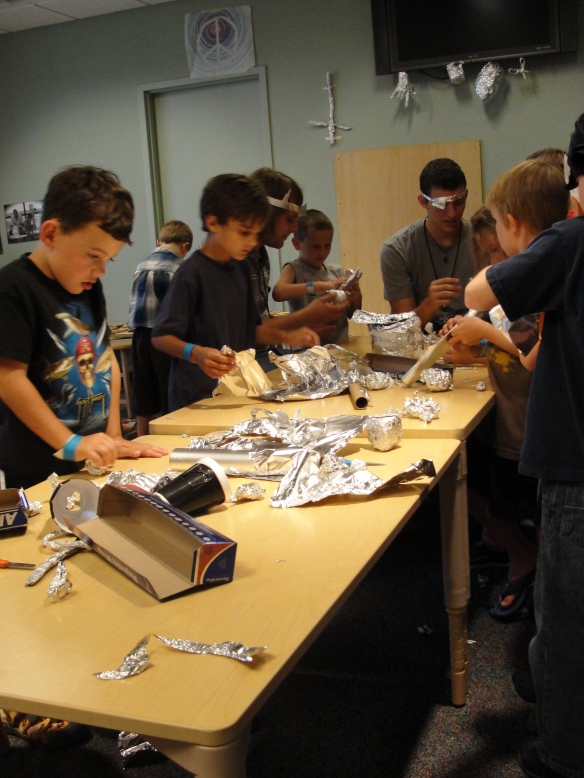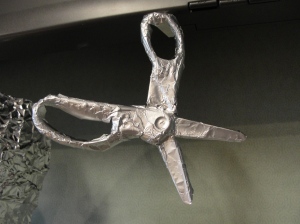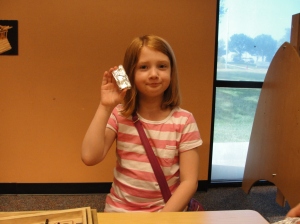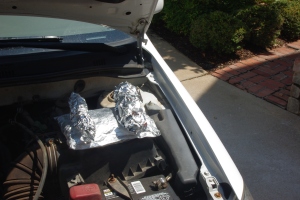Ahhh, good old aluminum foil. No tinker’s workshop is complete without a roll of at least one of the elements on the periodic table.
Here at the DHDC, we’ve been using the materials from the Guild to spark visitor interactions. This week, our explainers have been busy sharing aluminum foil pieces with museum guests and asking the open-ended question “What can you make?”
This was so popular with the explainers that it quickly became a regular occurrence in our Science Cafe, where visitors used table space to craft their little hearts out. Some visitors could be persuaded to leave their creations with us so we could put them on display, so a wall of fame was born.
And it grew and grew.
I showed some children how to “cast” items in aluminum by pressing the foil over a surface.
Some children found interesting things to cast.
And those creations turned out to be pretty robust.
Then, the aluminum foil facilitators began to wander around the museum. They discovered that visitors could be coaxed to make aluminum foil T-Rex claws, which prompted many children to play dramatically in our traveling dinosaur exhibit. These wildly slashing dinosaur children turned out to be very difficult to photograph.
Pretty soon, the claws were a meme within the Discovery Center. Now, no matter where we gave the children aluminum foil, they made dinosaur claws for their fingers. Even if we weren’t in the dinosaur exhibit, and even when we didn’t provide instructions on how to make claws, the children made what they saw other children had made.
And they remained just as difficult to photograph as before.
Well, the next day we gave no instruction and returned to saying “What can you make?” We got no dinosaur claws, and everything was a surprise again. Guess what this dude is making:
While his sister made a wallet.
The summer camp kids got in on the action. This little gal made a line of accessories to help her dress up like a witch, which included long fingernails and a magical bracelet.
The boy behind her proved you’re never too young to chuck the deuces in the back of a photo. He retrieved his aluminum foil dagger and crown, and an epic battle unfurled.
This raged on for quite some time, and I was lucky to escape without injury while capturing the action.
We learned a lot about facilitating an open-ended creative activity, and we became more aware of how the surroundings often dictate the products our visitors make. I think we’ll continue to work with aluminum foil to hone these skills in the coming weeks.



































